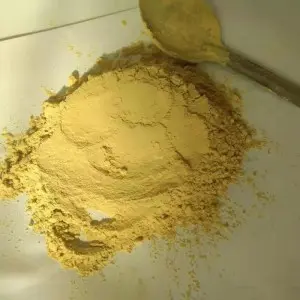Mar . 04, 2024 14:15 Back to list
Introduction to Pollination
Introduction to Pollination
We all know that pollination is mainly carried out by insects, birds, animals, water and wind. Insufficient pollination affects the fruit and seed set and resistance to herbivores., This is because of limited outcrossing opportunities. To overcome these effects, artificial pollination is carried out by humans. In this process, we use mechanical techniques to pollinate plants. In this type of pollination we don't need any insects or weather agents. Application of this technique is important because most of the time there are not enough pollinators to perform pollination and sometimes their introduction is also risky. This technique is considered as an alternative to natural pollination.
The Process of Artificial Pollination
In this type of pollination, we use a mechanical method by which we carry pollen or plant sperm from one flower to another flower. This enables the pollen to fertilise the ovaries and create seeds that develop into fruits and new plants. With the decreasing number of bees, artificial pollination is more in trend. If we take the example of China, 100% plants are pollinated artificially. So, we can see that artificial pollination is beneficial.
POLLEN FOR POLLINATION OF LARGE CHERRY
Method Involved in Artificial Pollination
There are several methods which are involved in artificial pollination. Some of them are listed below:
Method I
This method is mainly used for vegetable plants, which have separate male and female parts. In this technique, we take the male flowers and remove their petals. This process should be done without touching the stamen, to avoid the pollen transfer to the fingers. After this, we have to search for a blooming female flower with its petals pushed back. We need to then touch the stamens of the male flower to the stigma of the female flower and roll it smoothly and gently, so that the pollen gets transferred to stigma and pollination can happen.
Method II
In the method we can move cotton over the stamens of male flowers to collect as much pollen grains as possible. After this, the collected pollen is shed over the stigma of the female flower.
Method III
This method is mainly applicable for those plants that undergo self pollination such as tomatoes, beans, pepper, etc. In this method, fans are set up over the branches for shaking stems so that pollen grains fall over the stigma.
Advantages of Artificial Pollination
There are so many advantages of artificial pollination. Some of them have been listed below:
- Artificial pollination can increase the fruit size and seed numbers
- It has the ability of converting flowers to export fruits.
- It is more suitable because it does not depend on any chance factors
- Through this type of pollination, we can generate a large variety of hybrid plants
Conclusion
Pollination is the process through which the pollen is transferred from one point to another. This process is usually carried out by agents such as birds, insects, water, wind and seed production. In the absence of these agents, artificial pollination methods are used.
-
Pure Plum Tree Pollen for Sale - Optimal Pollination
NewsAug.22,2025
-
Apple Tree Pollen for Sale: Boost Orchard Yields!
NewsAug.21,2025
-
Premium Cherry Pollen: Essential for Pure Pollination
NewsAug.19,2025
-
Pollen Peach Tree: Pure Pollination for Bountiful Harvests
NewsAug.18,2025
-
Premium Kiwi Pollen for Sale - Boost Your Crop Yields
NewsAug.17,2025
-
Unlock Abundant Yields: Pure Pollen Peach Tree Solutions
NewsAug.16,2025
